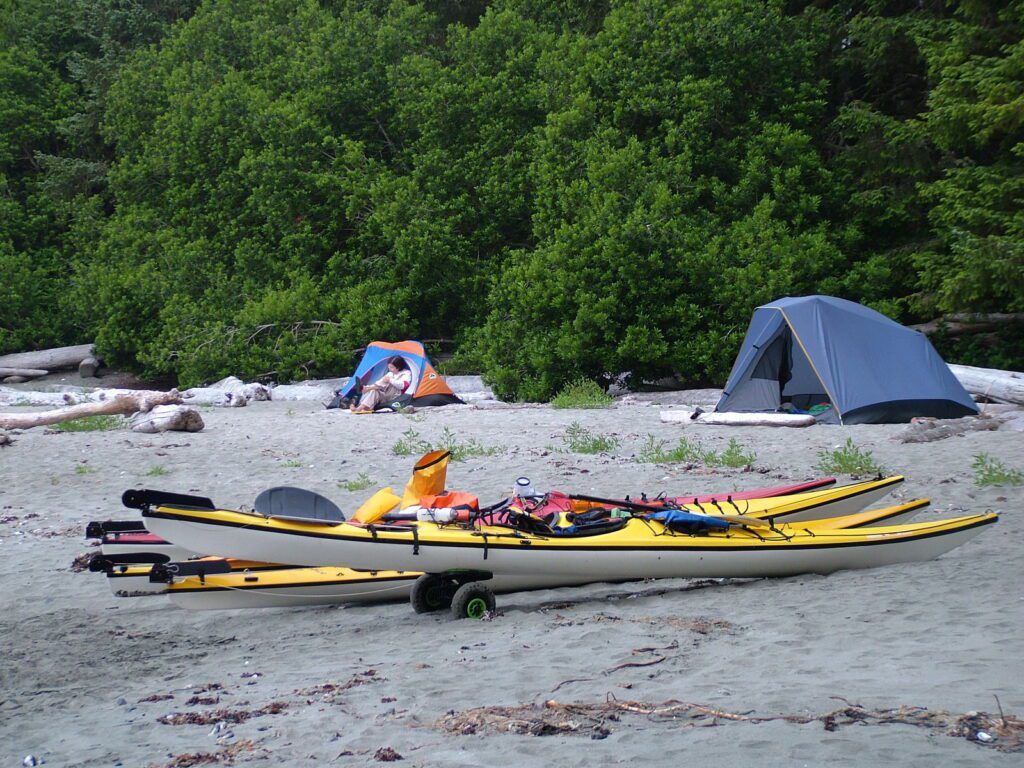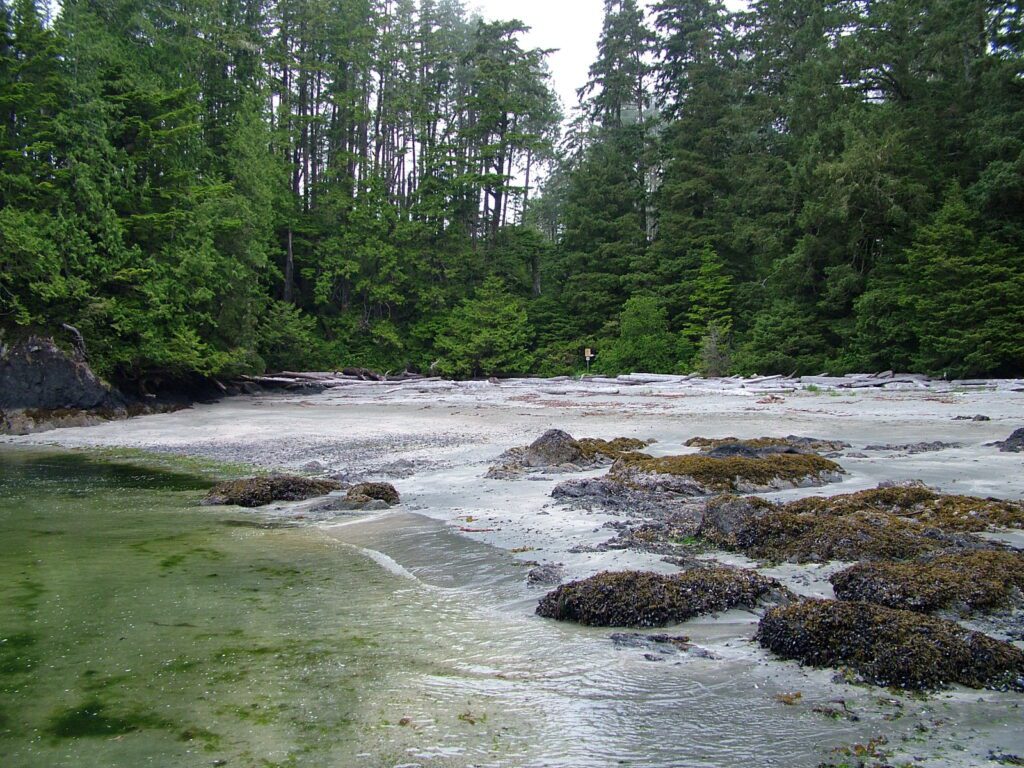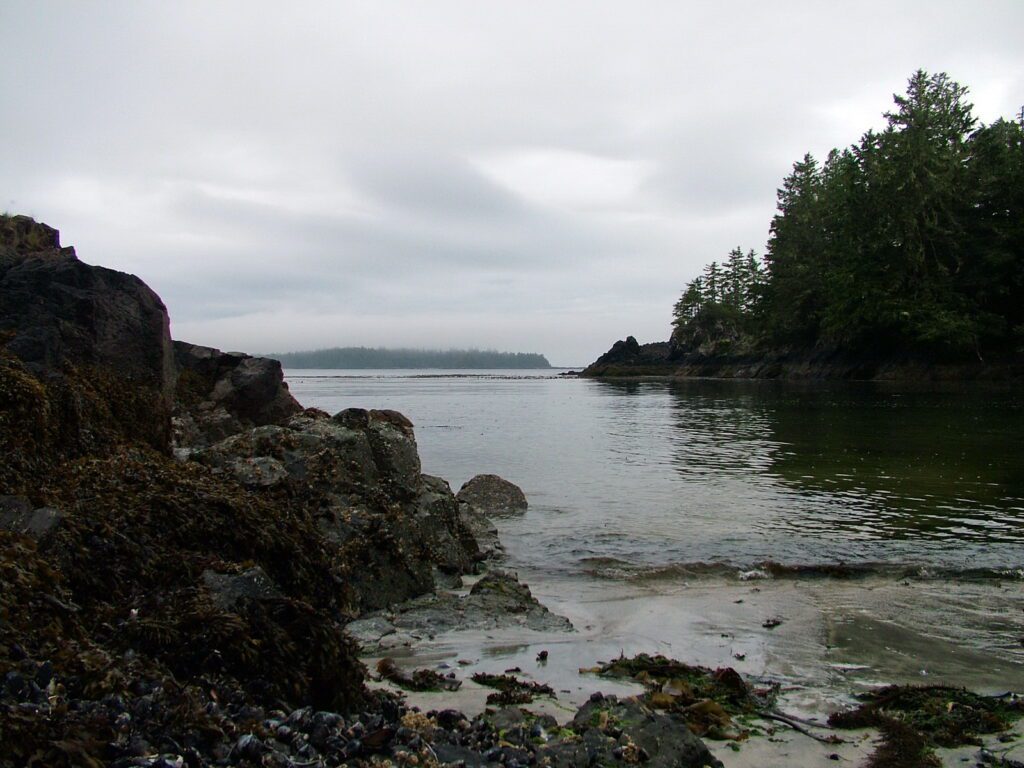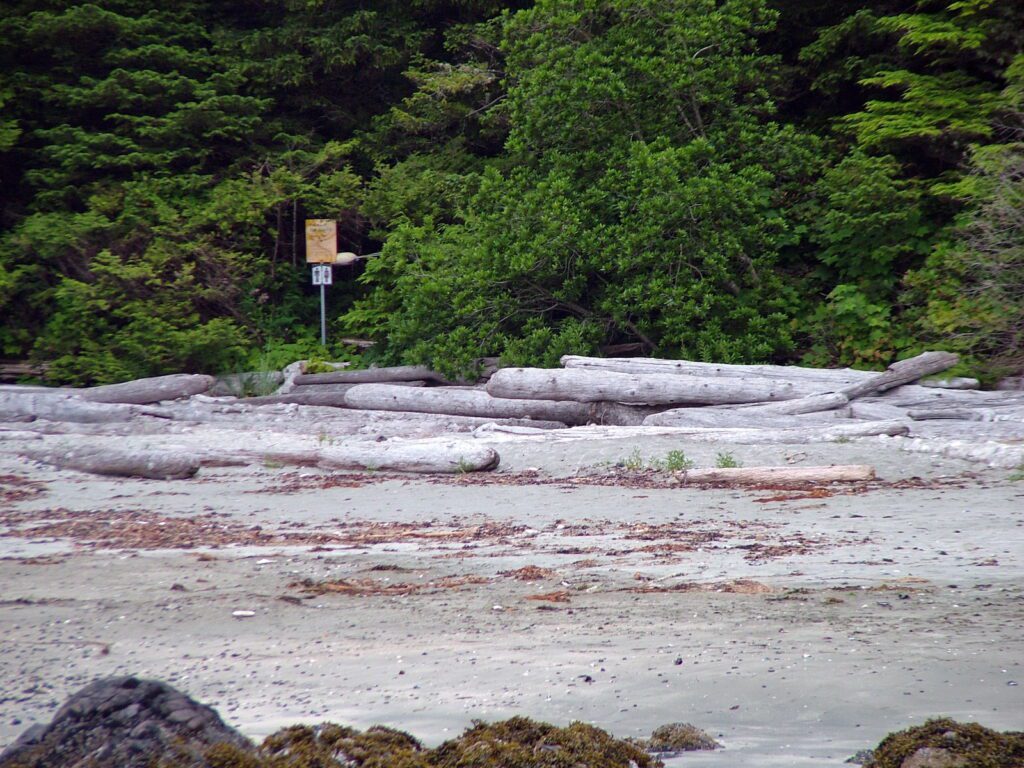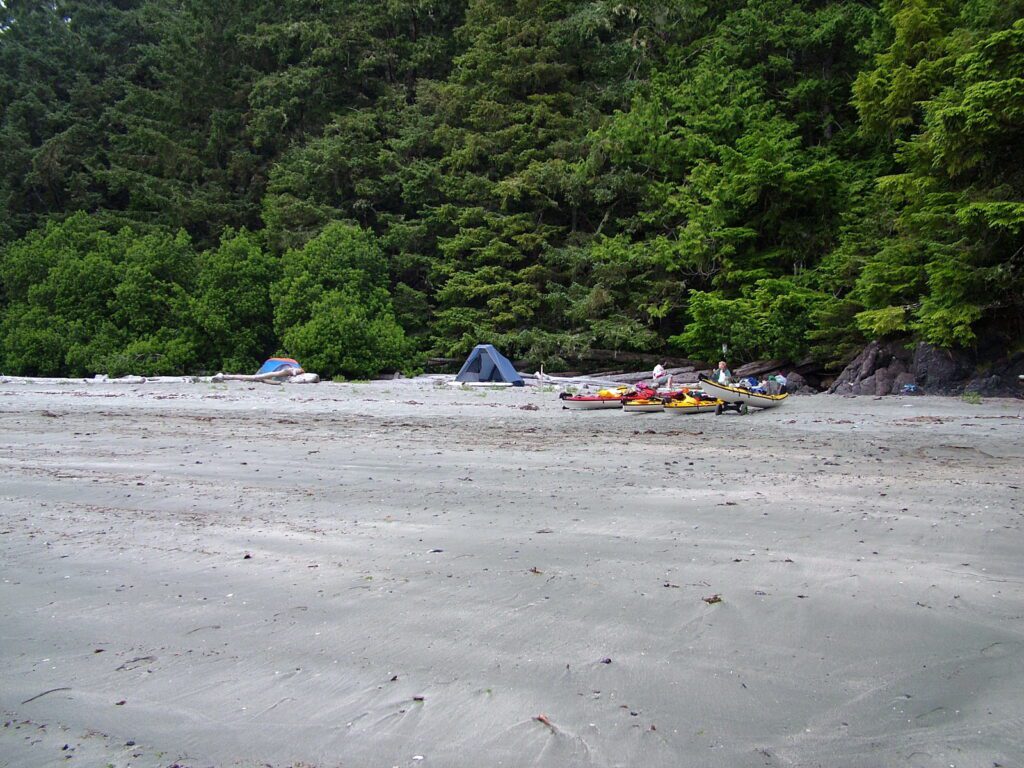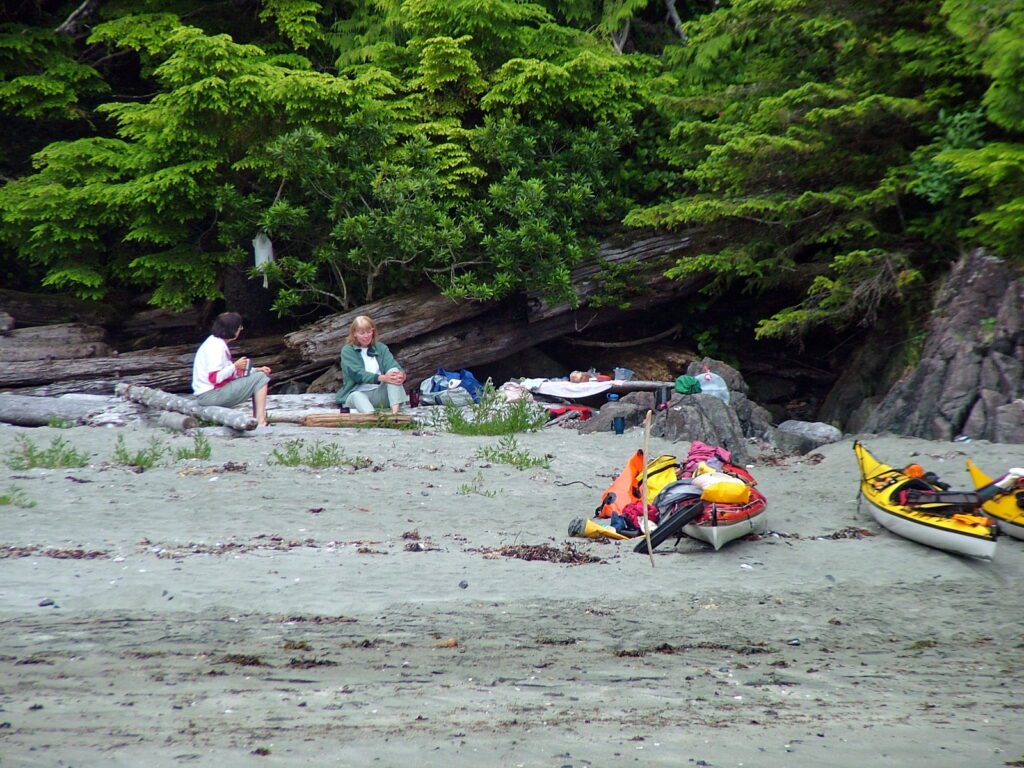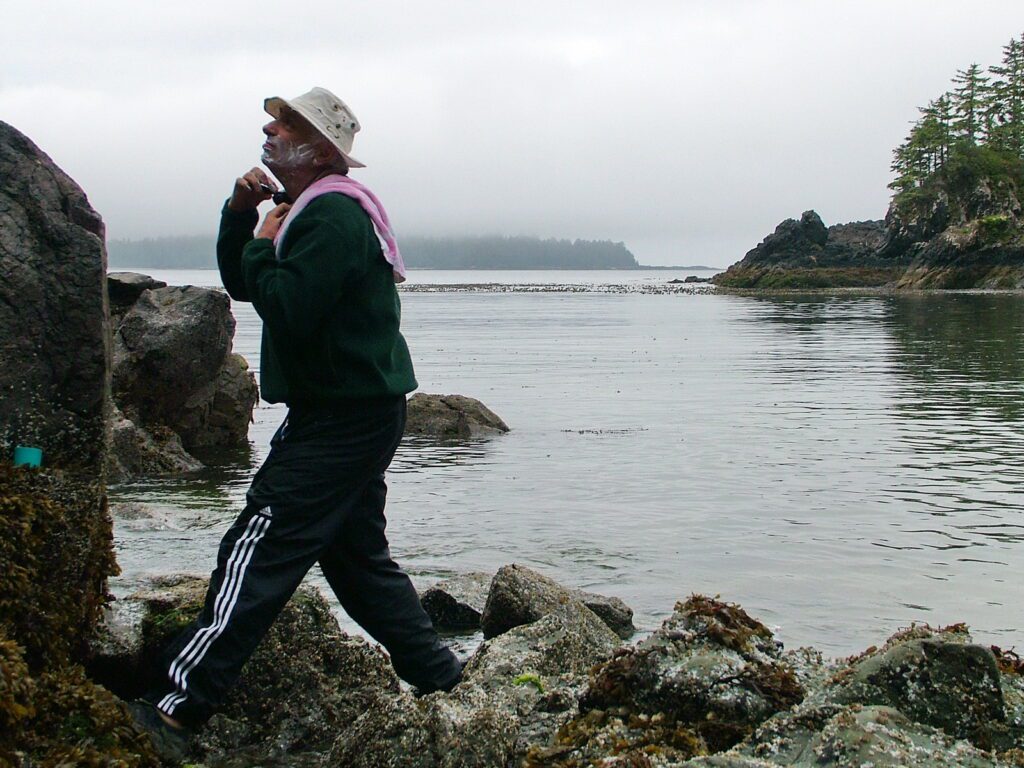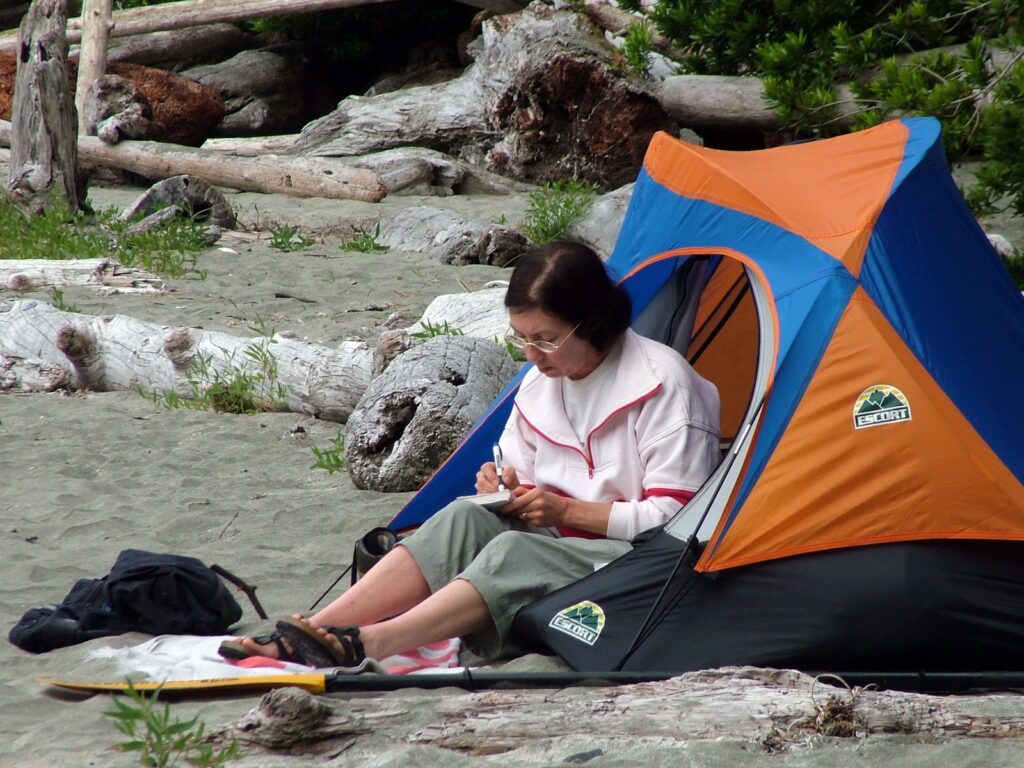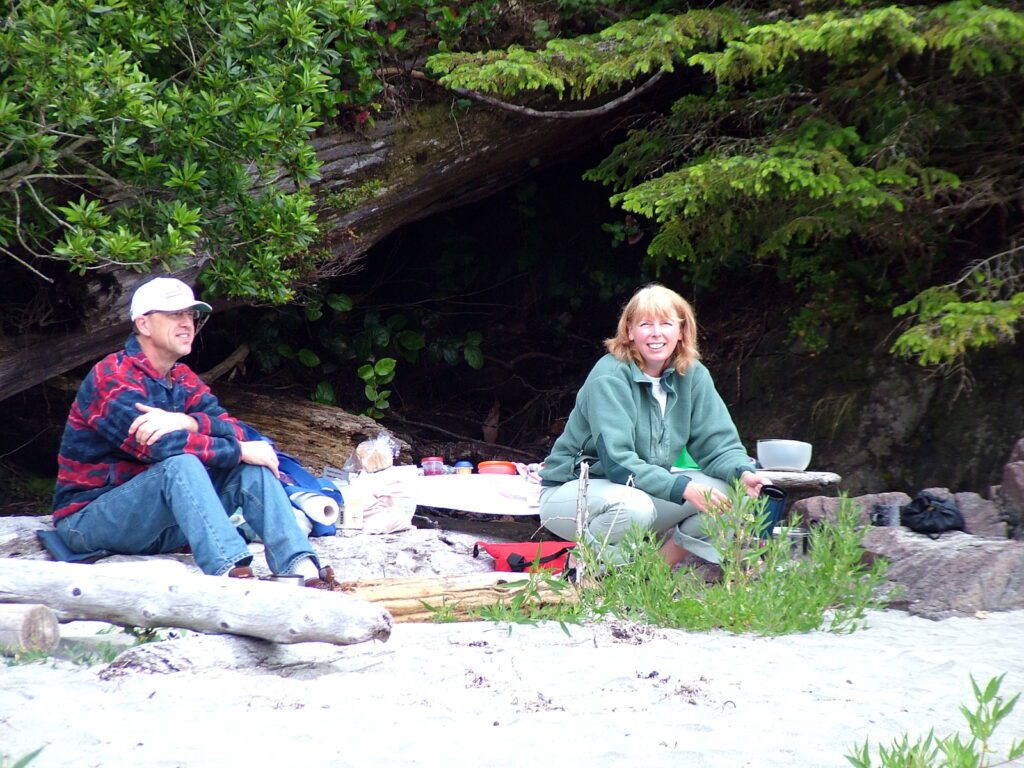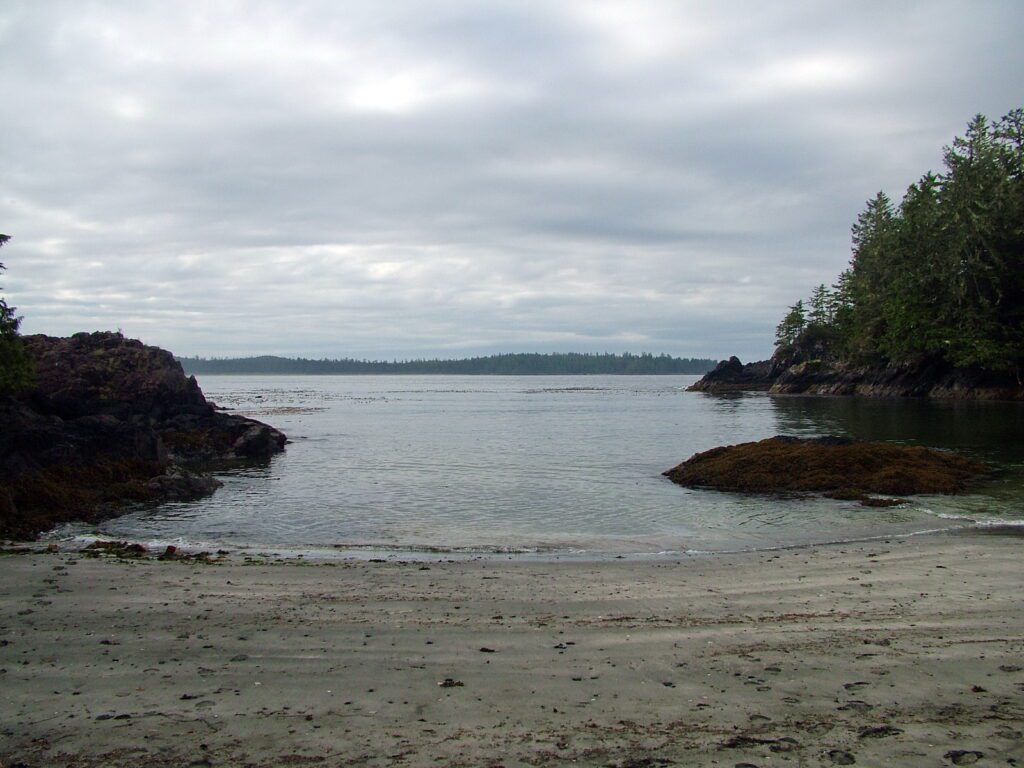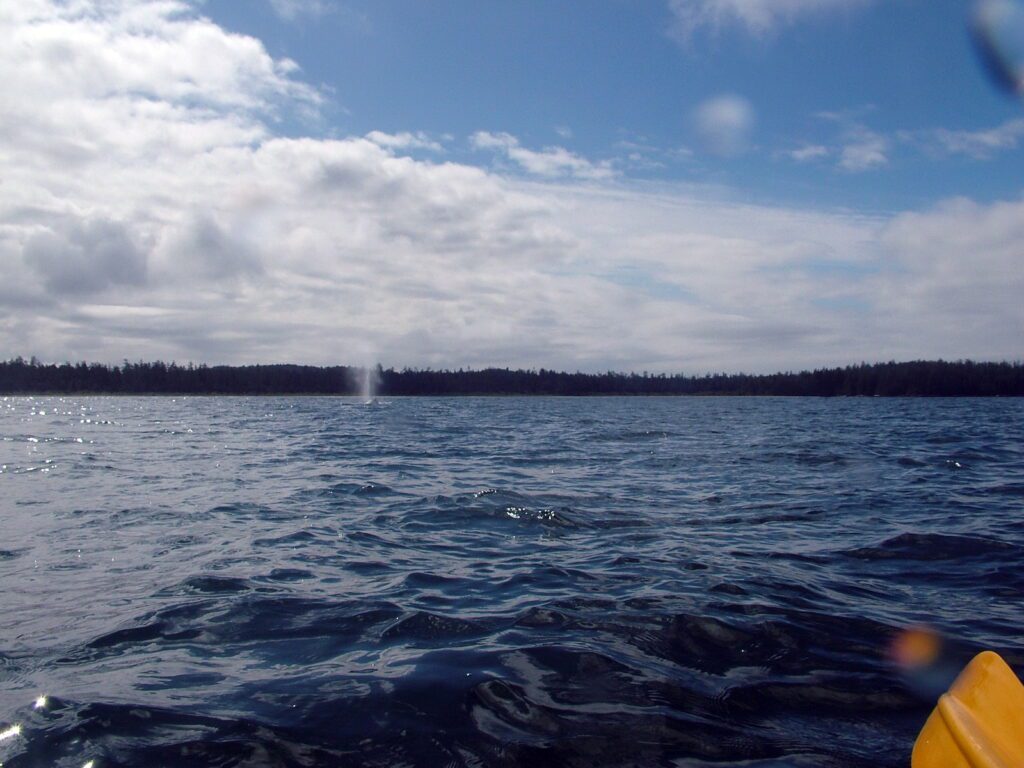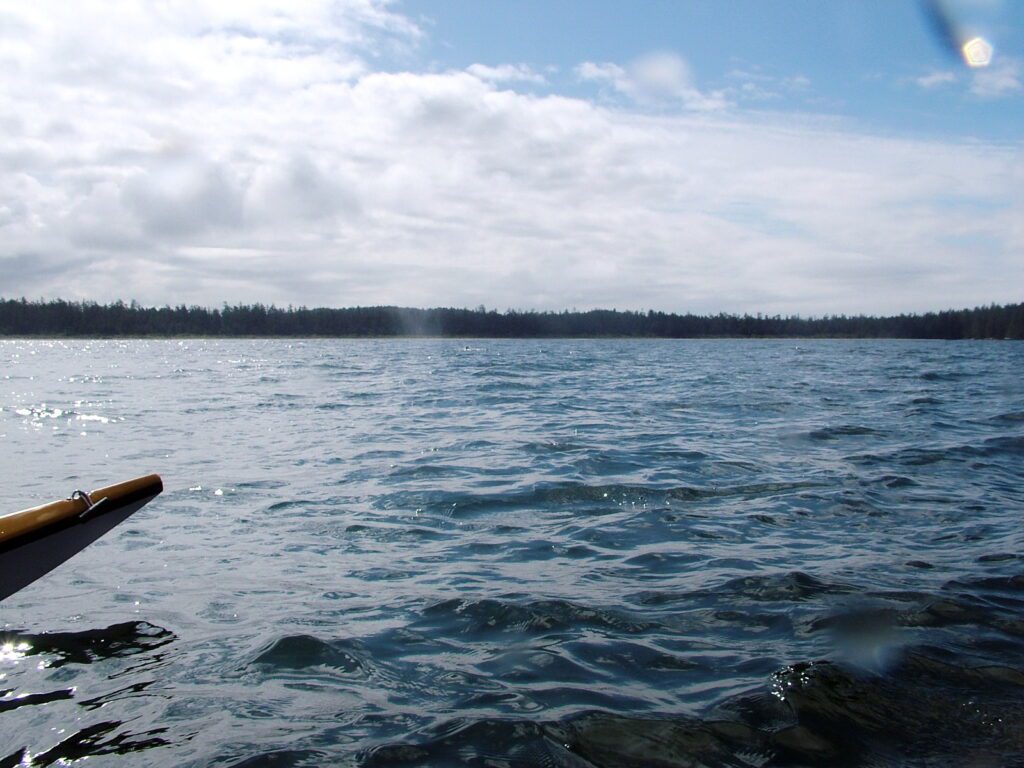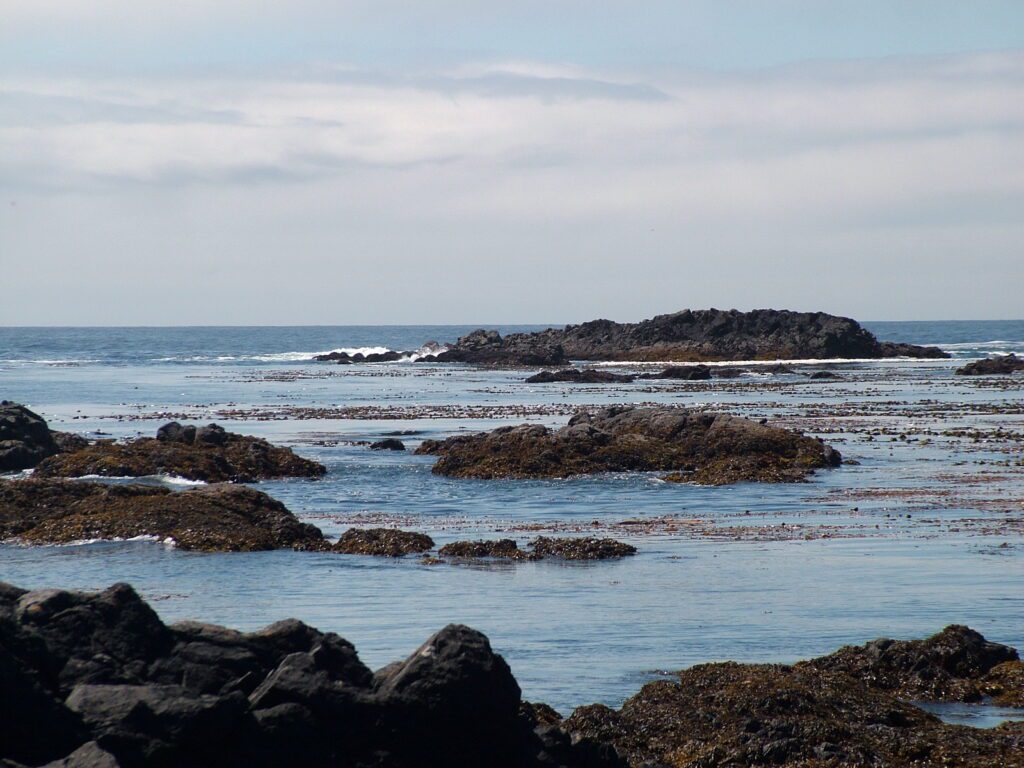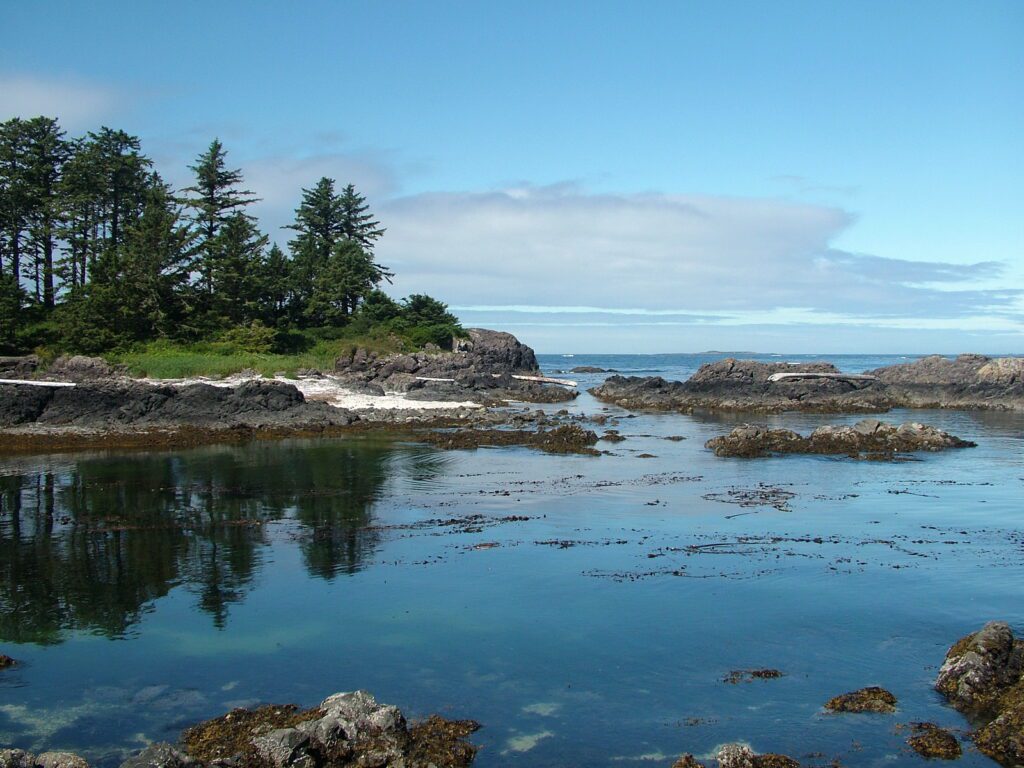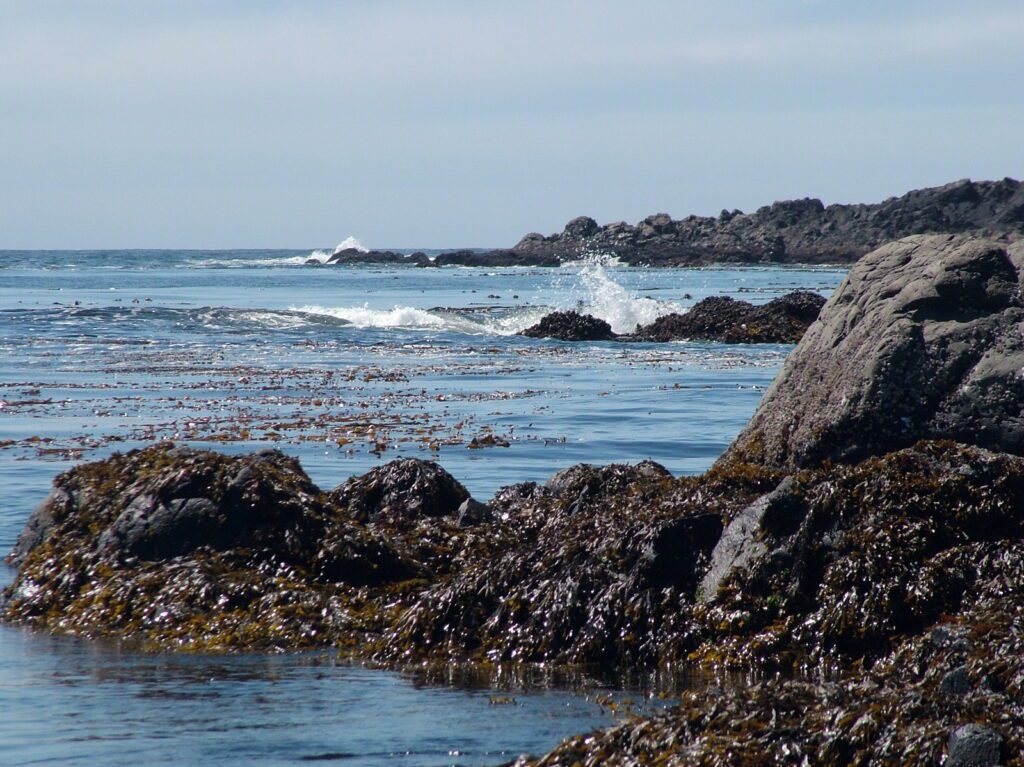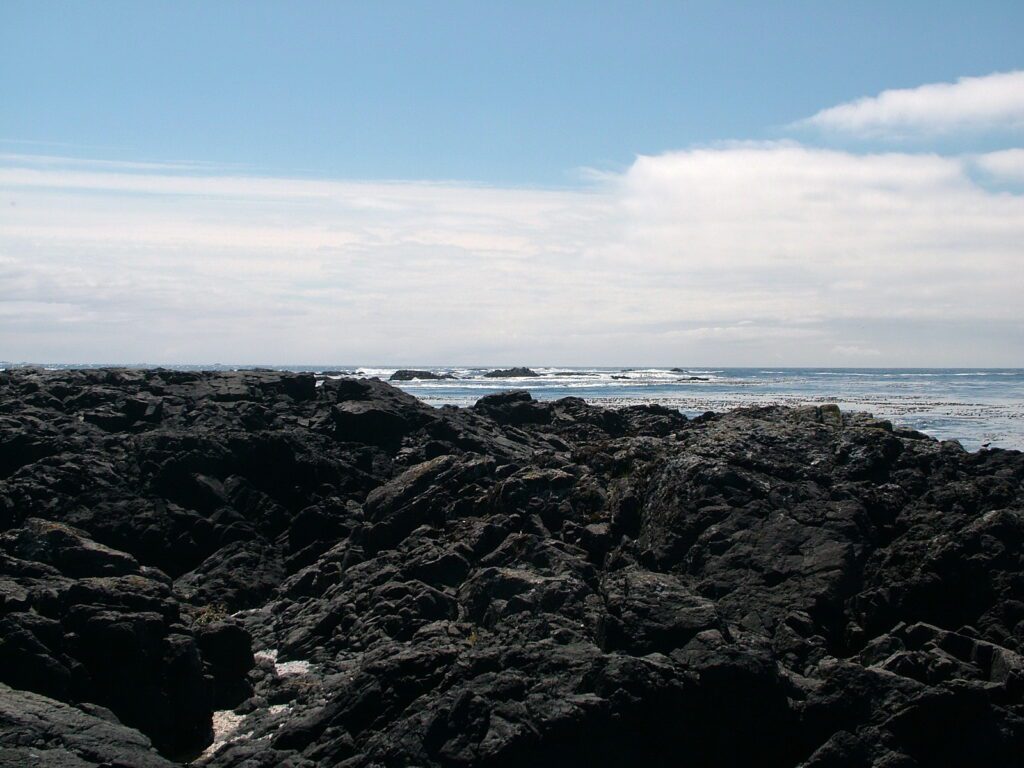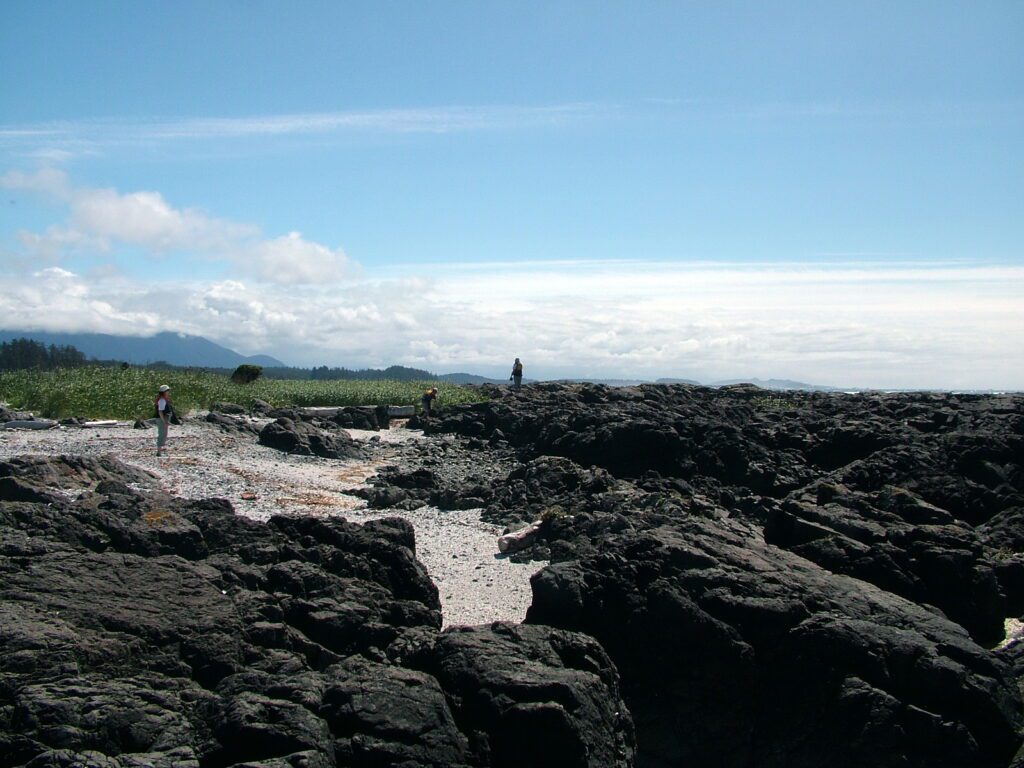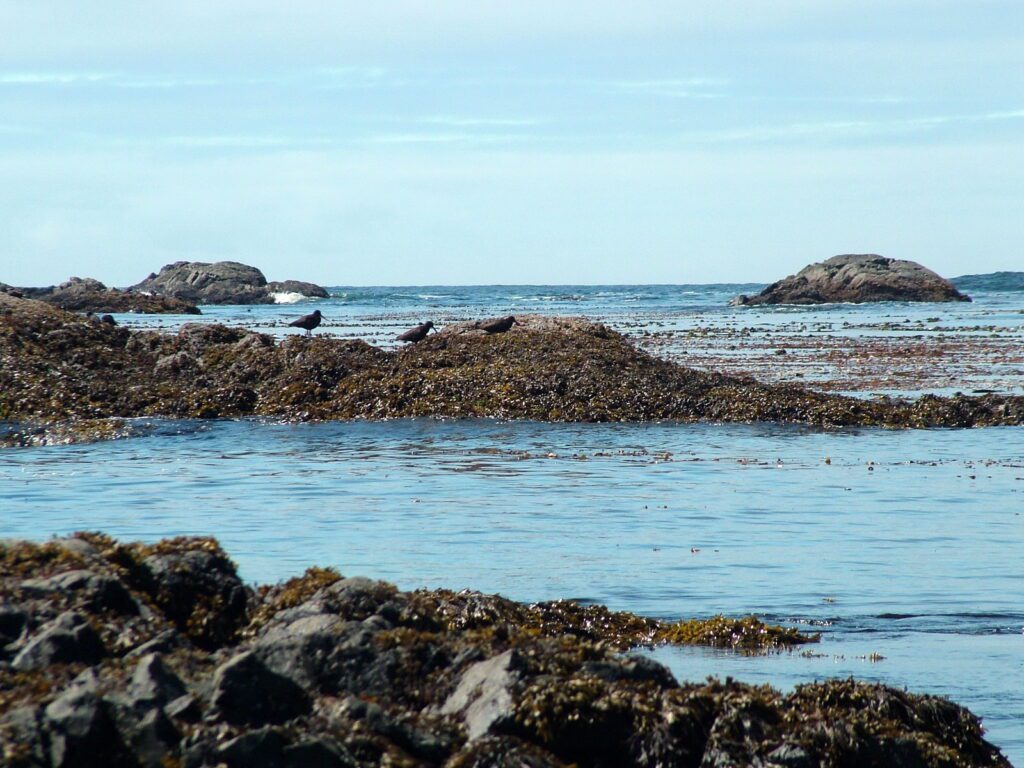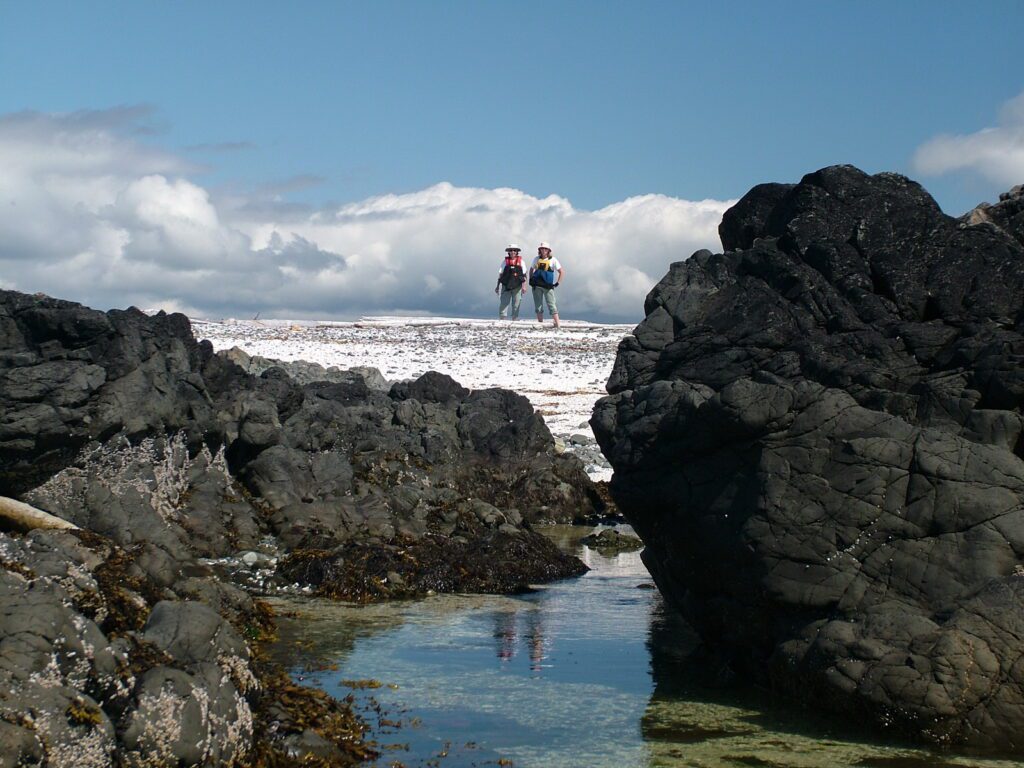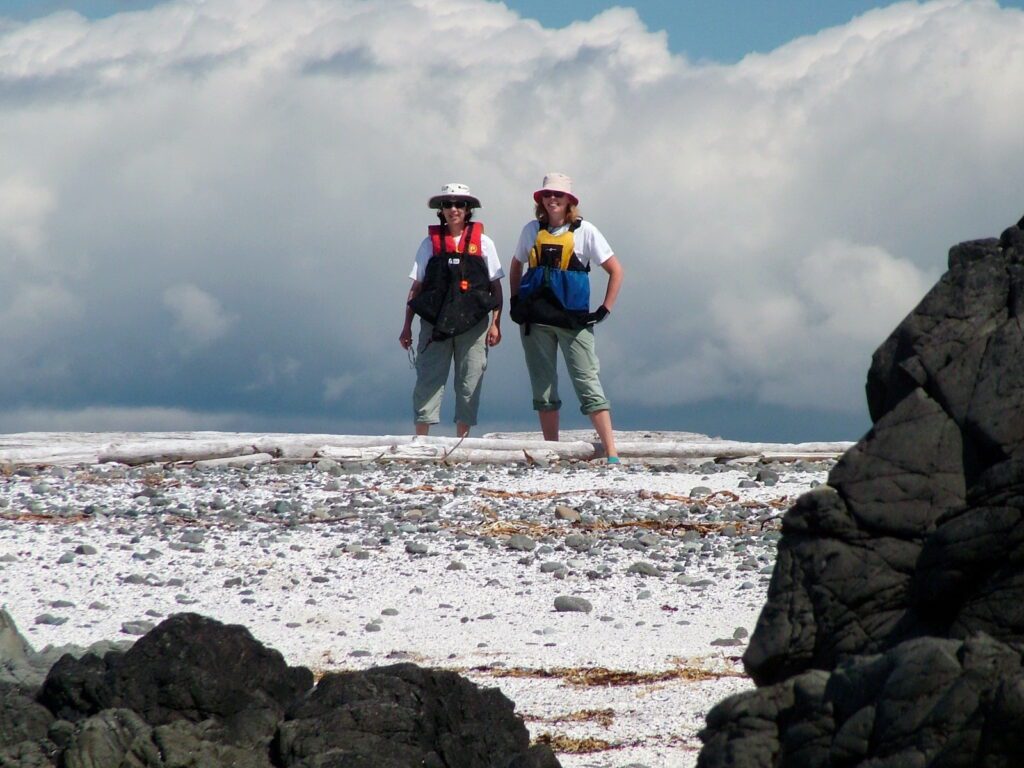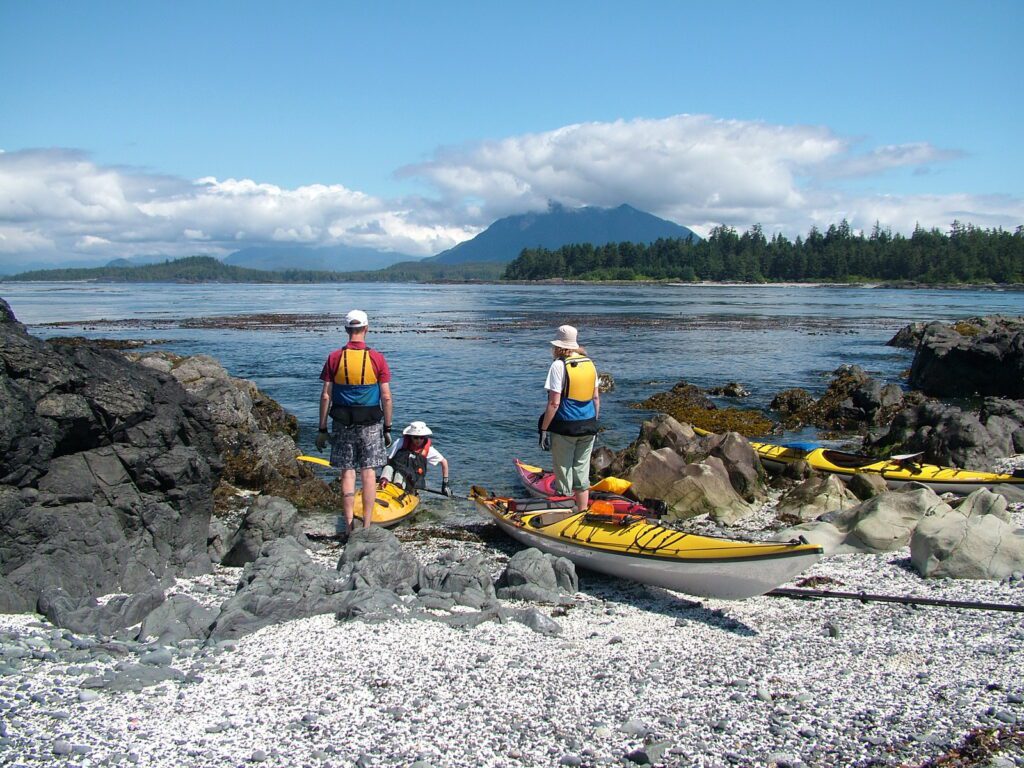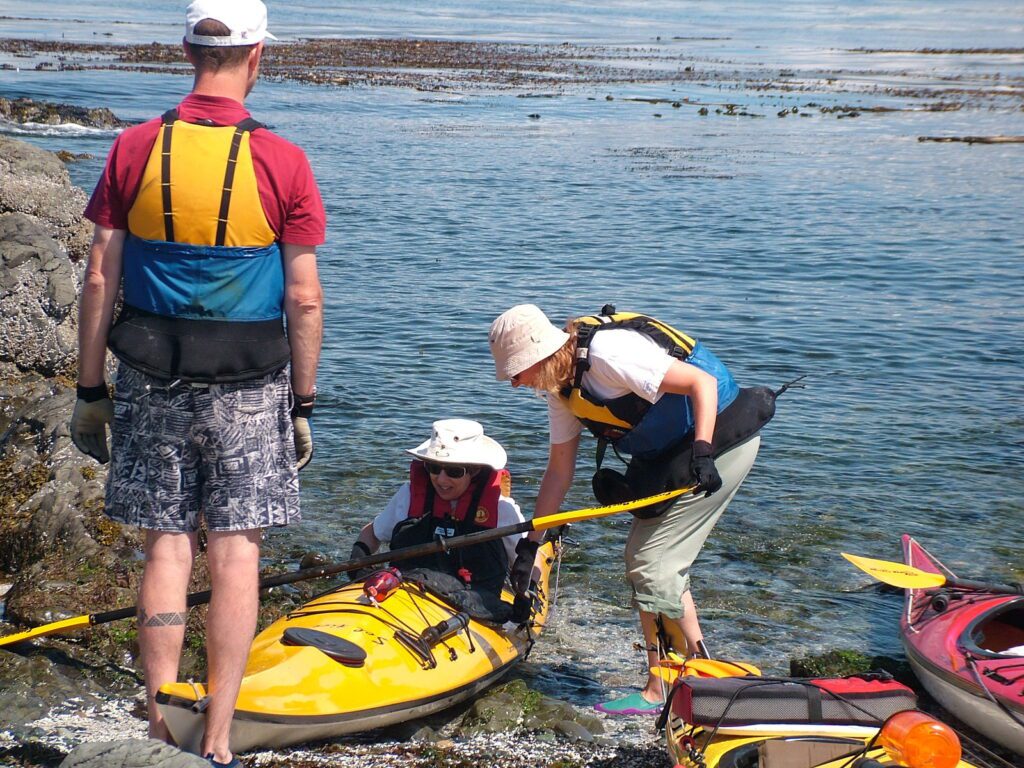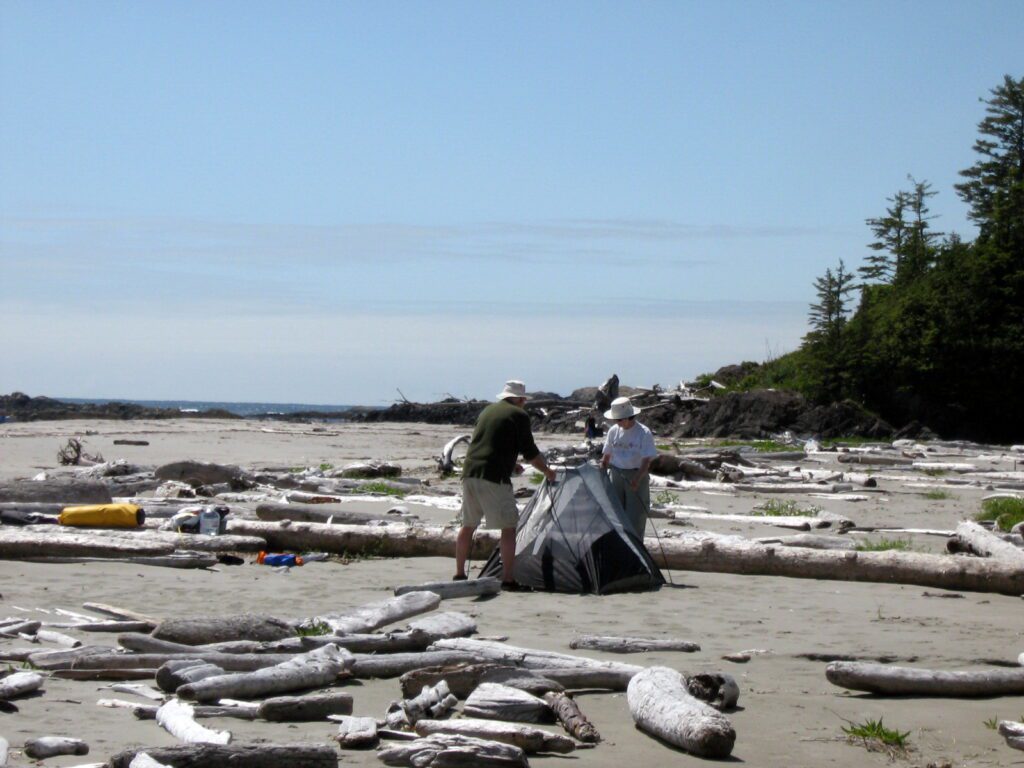Our Vargas Island Kayak Trip, Day 3 – Ahous to Medallion Bay
Continuing our kayak trip around Vargas Island, British Columbia, saw us waking up on the beach in Ahous Bay after our second night of camping. The temperatures were slightly warmer than the night before, but neither stars nor the moon had been visible when I left the warmth of the tent at midnight owing to the call of nature.
Our campsite was situated in a little cove off Ahous Bay at the south end of the main beach that lies along the edge of the Bay. As at most campsite locations on Vargas Island, there is a primitive pit toilet at the far end of the beach.
Upon emerging from our tent near sunrise, Martin was quick to inform us of our nocturnal visitors. Indeed, the Sea Wolves had been prowling in and around our camp.
It’s a wonder I didn’t meet up with one of the Sea Wolves when I blindly took relief in the dark of the night. Most scat was found around the opposite end of the beach from our tents.
Ahous Bay is situated in Vargas Island Provincial Park which protects the rugged western portion of Vargas Island. The lengthy expanse of Ahous Beach proper is said to rival Long Beach in size. So vast is its hard-caked, sandy surface that single-engine aircraft occasionally land there.
The largest beach on Vargas Island is the main beach in Ahous Bay. Located on the southwestern shore, it faces out to the Pacific at the end of the La Croix reefs.
Having risen ahead of the sun, there was no rush to get going. We had to wait for the fog to lift, and the distance we would be travelling this day was relatively short. Everyone took their time getting ready for the day.
Once again, I busied myself documenting our adventure in my diary.
Claire and Martin had told us that one other time when they camped here, they awoke to see whales on the far shore. It is common for Gray Whales to bring their calves here. Martin was determined to spot some and scanned the bay for spouts.
As we readied to depart on our next leg of the journey, the overcast sky broke to reveal a blue ceiling and bright sunshine.
The wonderful thing about kayaking in Clayoquot Sound, which is where Vargas Island is situated, is the miles of sheltered inlet waterways, broad sandy beaches, and the challenge of pounding surf on the exposed western shore. We were going to see some of the rougher waters on the next leg of our trip.
We had barely pushed off from shore when Claire and I spotted the first telltale plumes of water on the far side of the bay. The four of us excitedly paddled towards the opposite sandy beach and were awed every 8-10 minutes as first one, then two, and a third whale would spout water and break the surface.
We were so captivated that barely any notice was given to the monstrous swells that lifted our kayaks to and fro, at times abolishing the view of our companions when our kayaks sunk into deep troughs of water. Of more concern, for me, was the fear of a whale becoming too curious and breaching next to one of our kayaks.
Continuing along the rugged western shore of Vargas Island, we paddled in a southerly direction. The La Croix Group of islands lay between Ahous Bay and Medallion Bay. They are a group of small islands, highly visible outcroppings of volcanic rock studding the waters.
The sea conditions can be more challenging on the “outside” rim of Vargas Island being exposed to the open ocean with swells rolling in from as far away as Japan.
As we headed towards Medallion Bay, the waters became increasingly turbulent. Waves were crashing all around us on rocky barriers projecting above the surf…naturally formed breakwaters that render the interior passages relatively safe.
Still, Claire and Martin were extremely cautious even though time was of the essence since conditions can change rapidly. Fogs could roll in or winds could rise rapidly making conditions dangerous for kayakers. We also had to be mindful of the changing tide, which can create an enormous surge when being constricted by two landmasses in close proximity to one another.
Martin suggested pulling up onto one of the more substantial rocky reefs to afford closer views of the rugged terrain and the breaking waves.
An added bonus was the opportunity for Bob to snap some photos of Black Oystercatchers. The waters between the reefs were rife with beds of sturdy Kelp.
There was quite a bit of surf action on the exposed beach with pounding waves thundering in the distance. The jagged beauty of the landscape was a reminder of the volcanic activity that created this wilderness area.
Claire and Martin were highly attuned to the weather conditions and appearance of the sky.
We were getting anxious to reach the safety of Medallion Bay. Setting up camp there for the night would put us within a short paddling distance of Tofino, our home port.
By this point in our kayak trip, I was feeling fairly confident in my abilities, but the surf still intimidated me.
I felt relief when Claire announced that the day’s destination was within sight, Medallion Beach off Wilf Rock. As Claire, Bob and I sat afloat, waiting for Martin to safely land the other side of the brisk surf, our kayaks bobbed in the huge rolling swells. It was very meditative, but the spell was broken when it was my turn to approach the beach. I hoped that my kayak would surf on the crests rather than nosedive into a valley between the waves. The day’s excursion had been invigorating, but I was happy to be on dry land again.
Frame To Frame – Bob and Jean

